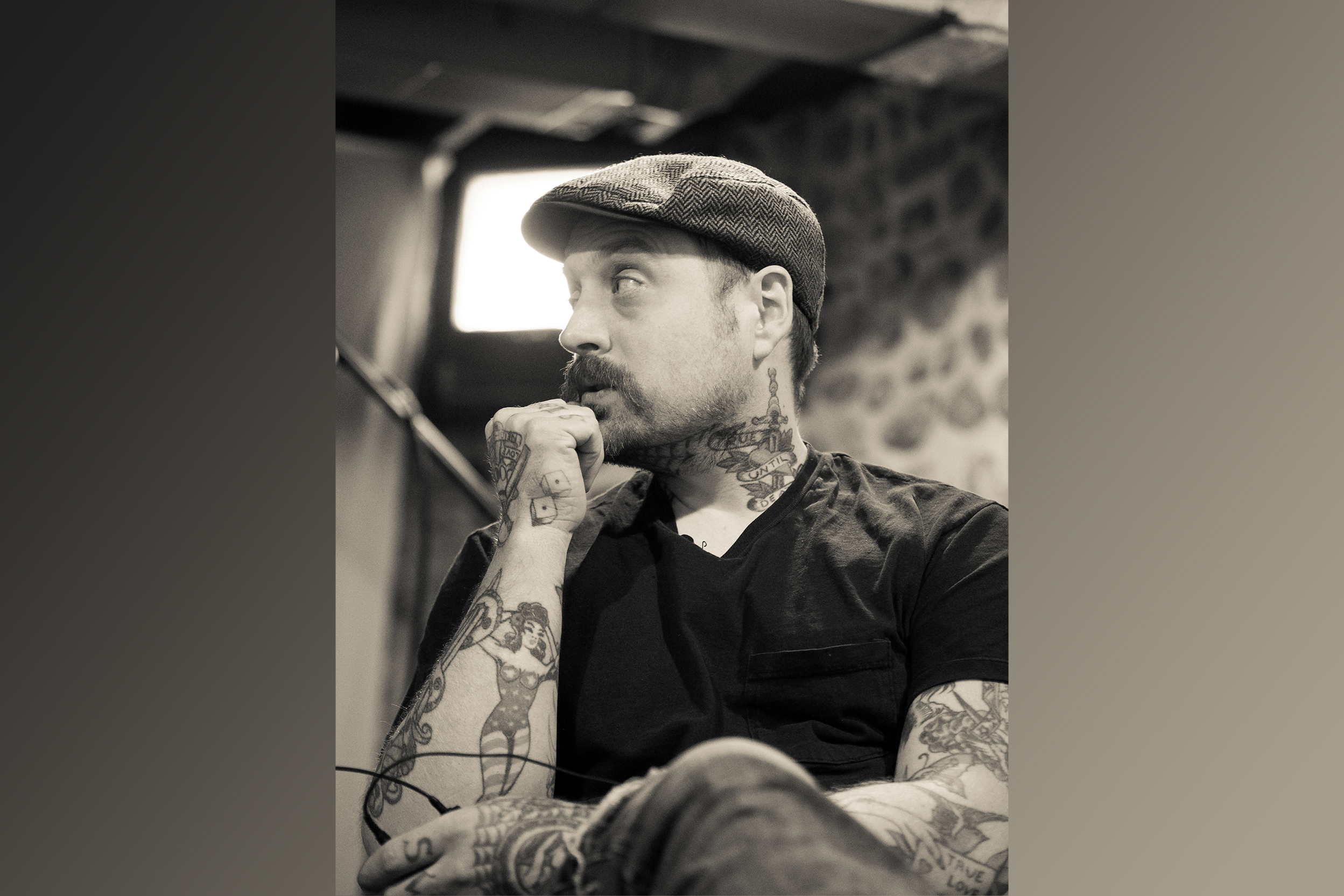
Today we’re welcoming back contributing writer Jake Bouchard (for the 3rd time!) to share some information about the way the photographic film industry (specifically the photos labs) have changed over the years. He will share his personal story, along with some interesting facts, and a great overview of what has been happening over the past 18 years...
KEH and I discussed a few options for this guest post and decided on the general topic “The Evolution of Photo Lab Life.” As I sat to write the post however, I realized I couldn’t tell the story of what it’s like to work in a struggling and declining industry without talking about how I got here. My career in the photographic industry and the industry in general share a couple of significant milestones; milestones that make me feel as if I am a curse to the world of “film photography.” It sometimes feels like I’m the last of an endangered species, but I’m trying to hold on and there is some light at the end of the story, so please stick around…
My Life Before Photo Labs:
My grandmother, who had a large role in raising me, was an avid photographer who always had a camera with her and the book shelves at her house had a large section devoted to the art of photography. When I was in my early teens, my interest in making my own photographs began to rise, and by 1994 I was borrowing my grandmother’s camera quite often and begging to be shuttled to the local Kmart to have my film processed. (In 1994 Apple released the Quicktake 100, the first popular consumer-level digital camera.) Eventually, I became bothersome enough that in 1996 she gave me one of her old cameras, a Yashica Electro 35 GSN, and since I had a license and a job by then, I was off and spending my own money on film and processing. (1996 saw the release of the fist Sony Cyber-Shot digital camera.)
I had a difficult time deciding what direction my life would take, but I stuck with adage “Make your avocation your vocation”, and headed off to photography school in 1998. (The late 90s saw marketing partnerships between Kodak and companies like Kinko’s, Microsoft, and IBM to help introduce and popularize the idea of digital photography.) The Hallmark Institute of Photography (HIP) was a short 10 month photography program that focused on traditional portrait and commercial photography. HIP was an amazing program and while there, I learned how to process film, print in the darkroom, and retouch negatives and prints with graphite, pencil, and dyes – everything a film photographer would want to know. I graduated from HIP in 1999 and went out into the world to look for a job. (1999 saw the release of Adobe Photoshop 5.5.) The summer after I graduated from Hallmark, they demolished the negative retouching room and installed their first full size computer lab – my class was the last one to learn all of the old-school techniques of film photography. (1999 was the year photographic film sales in the U.S. peaked, before dropping off over the next decade.)
Photo Lab Life, The Early Years:
While attending photography school, I found that I had more talent and interest in the processing/printing/finishing end of the photographic world than in the image making end. After graduating, I tried to make a living as a photo assistant and a freelance photographer, but kept gravitating back to lab work and eventually decided to make photo labs my full time job. My first full time lab job was at a small family run lab in Yarmouth, ME called Photo :59. Photo :59 was a single mini-lab operation that could process and print only 35mm C-41 film. We serviced a few local customers, but the bulk of the income came during the summer months when travelers would come in to have their film processed. Over the year or so that I was employed at Photo :59, we noticed a significant drop in film processing revenue and started having issues with the C-41 negative processing machine due to the low volume (more on that later). It seemed that the travelers were the ones with the money and access to early digital cameras, and tended to be early adopters. In the spring of 2000, I left Photo :59 to work for a larger lab in So. Portland, ME called 60 Minute Photo.
60 Minute Photo offered a wider range of services than Photo :59, and had a larger mix of customers that included professional portrait and wedding photographers. The lab at 60 Minute Photo employed 6-8 people and included 2 mini-lab printers, 2 darkrooms, C-41 and BW dip and dunk machines, and a fledgling digital service. When I left 60 Minute Photo they were still going strong, but there were dark clouds on the horizon and after 25+ years, the owner retired and sold the lab.
By the mid 2000s, both Photo :59 and 60 Minute Photo were closed. When I moved to Portland, ME in 1999 there were at least 7 independent labs in the area that serviced professional and amateur photographers. Today, I know of just one that still processes and prints traditional film.
The Middle Years:
I moved to Manchester, NH in 2002 and was lucky enough to find a great commercial lab called Image 4 Concepts. When I started working for Image 4 they were running a color and a b&w darkroom, and E-6 and C-41 dip and dunk film processors. They had a wide customer base that included a large number of commercial and art photographers. During the first year I was there, Image 4 saw a sharp decline in color negative film processing, but the E-6 volume continued to be strong for quite some time due to the fact that commercial photographers still relied on slide film for product shoots. The mid 2000s brought some impressive advances in digital image capture and our commercial photographer base dropped off almost entirely over the next five years. During the time I worked for Image 4, I helped shut down and dismantle all of the darkrooms and both film processors as the company adapted to the declining demand. Image 4 had been early adopters of drum scanning and Lightjet digital printing, so they remained flexible and over time changed their focus from a photographic lab to a Point of Sale and Trade show graphic production house.
My wife and I moved to Dover, NH where I started working around 2006 for River’s Camera and Telescope as a camera sales person, but I quickly moved into the lab. River’s was another small lab, but had some new machines and the company had been in existence for over 70 years when I started working for them. The lab maintained a C-41 machine, an E-6 roller transport film processor, and a small drum processor for black and white film. Within a year of employment at River’s, I helped break down and remove the E-6 processor which couldn’t be maintained due to low volume. When the owner decided to try to sell the River’s name and the lab, I decided it was time to move on and ended up at Photosmith just down the street.
Photosmith’s main location has been in the same little building for over 30 years and has expanded and contracted with the photo industry over the years. At its peak, Photosmith had two other locations (one included a portrait studio), and the lab also had a courier that would travel around to local businesses every day to pick up and drop off film for processing. When I arrived at Photosmith, one of the first things I helped do was to remove the E-6 roller transport film processor. It looked like we were heading down the same inevitable path that every other film lab I had worked for went down, and we were down to processing color negative film on just three days per week because of low volume.
Why Do Labs Close Or Stop Processing Film?
There are a large number of reasons why photo labs have closed their doors, but some keep on struggling through them and chugging along, but they will often have to work very hard to maintain the quality of their film processing. In-store equipment sales used to be large sources of income for labs and photo stores, but the increased popularity of digital photography and online camera sales have made it much more difficult to maintain staff and service. When commercial photo chemistry has low volumes of film passing through it, especially in large dip & dunk machines, the balance of the chemistry will be affected. Film processing machines run with a replenishment system that pumps fresh, concentrated chemistry into the tanks for each roll of film that passes through. When the volume of film drops and the chemistry sits for long periods of time, evaporation and oxidation will occur and this affects the balance of the process. Small adjustments can be made to correct these imbalances, but long term it becomes too costly and too difficult to maintain. Chemistry problems and low volume have hit photo labs of every size and type over the past decade.
There are a number of labs that have been able to adapt and maintain business by diversifying into digital services, digital press printing (greeting cards, photo books), and gifting (mugs, mouse pads, etc.), but the early stages of adaptation almost always include jettisoning their film processing. Usually it starts with black and white services (due to low demand and high labor), then it moves onto E-6 film processing (E-6 is very sensitive to chemistry imbalances and changes are very apparent). C-41 processing is a bit easier to maintain and labs can correct for some chemistry issues when printing, so it will usually be the last thing for a lab to decide to shut down. Labs can run small single-use chemistry drum processors, but it is quite labor intensive and often not viewed as worth the time.
Light At The End Of The Tunnel!
There were some dark days here at Photosmith, but we kept pushing along. We had a few loyal customers shooting film that kept pushing us to continue, and would recommend us to any friends they had. One customer in particular was a big fan of toy cameras and pointed us towards the people in the Lomography “movement.” We decided that since we could still handle medium format films (which 1-hour chain labs generally don’t handle), we should start a website dedicated to toy cameras and 120 film processing and launched 120processing.com for mail order film processing. 120processing.com started to get a fair amount of work, and people using us started asking if we offered other services… so we launched a full service mail order site called OldSchoolPhotoLab.com. We’re still running relatively low volumes of E-6 and B&W film, but we now run drum processing units for those types of film.
In the end, what may have been viewed as the death knell for film photography may end up being the savior! The Internet had been a great resource for smaller independent companies like Photosmith to reach out past their normal geographic area, and through Twitter and other forms of social media fans of the old-school types of photography are connecting and sharing tips. Companies like Lomography are bringing back older types of film (like 110) and selling new, inexpensive film cameras, and retailers like KEH Camera who carry used equipment, in addition to online auction and selling sites are putting film cameras into the hands of people who might not have a store locally.
One of the areas that worries most people in the area of film photography is the supply of photographic film itself…. With news over the past year about Fuji cutting film lines, Kodak declaring bankruptcy and announcing the sale of its film division, and Efke stating that it is stopping production in the near future, it is hard to stay hopeful. Until you see that there are companies out there like Adox who are developing new photographic film emulsions and claiming that their film sales in Europe are on the rise. Kodak has stated that even after selling its film manufacturing, that they will continue to work with the new company for marketing and sales. In the darkest days of hope for film photography, a shining light is The Impossible Project, who is working to bring back instant film for Polaroid cameras and backs, and even most recently in an 8×10 format! Finally, we can’t forget the story of Ilford. When Ilford announced it was closing a few years ago, the employees joined together and purchased the company and the company is still going strong today.
There are so many people who still want a tangible, real physical product that they are finding ways to make it happen. There is hope for film photography in the world! Even if your local lab had to shut its doors, fear not! Reach out online and find the resources, we’re out here and we’re not the only ones!









